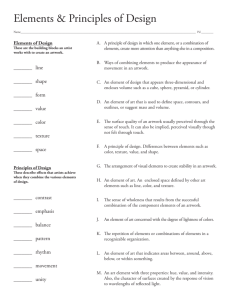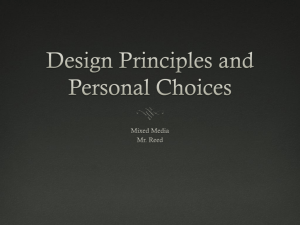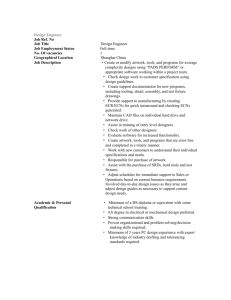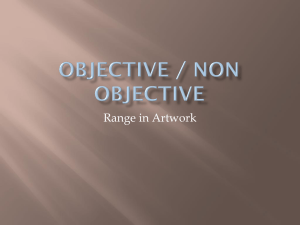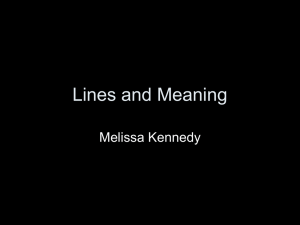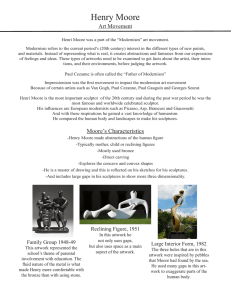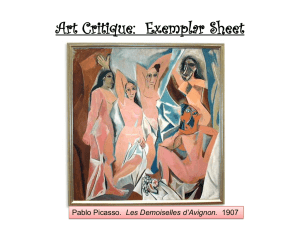Artforms Chapter 22 Notes modernism
advertisement
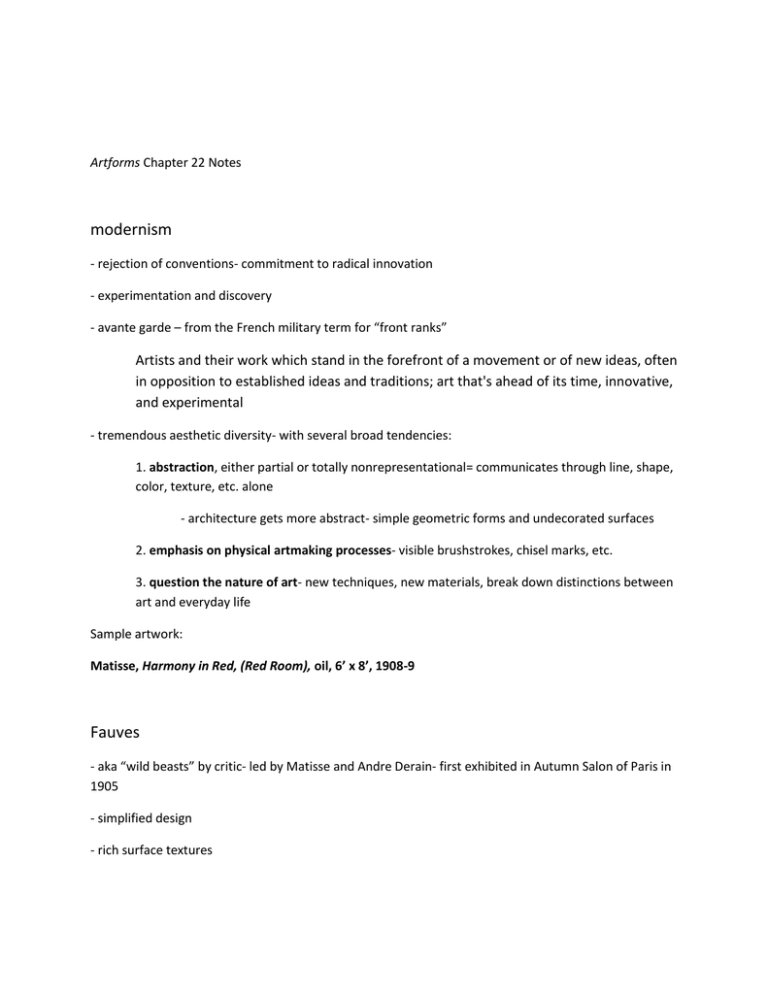
Artforms Chapter 22 Notes modernism - rejection of conventions- commitment to radical innovation - experimentation and discovery - avante garde – from the French military term for “front ranks” Artists and their work which stand in the forefront of a movement or of new ideas, often in opposition to established ideas and traditions; art that's ahead of its time, innovative, and experimental - tremendous aesthetic diversity- with several broad tendencies: 1. abstraction, either partial or totally nonrepresentational= communicates through line, shape, color, texture, etc. alone - architecture gets more abstract- simple geometric forms and undecorated surfaces 2. emphasis on physical artmaking processes- visible brushstrokes, chisel marks, etc. 3. question the nature of art- new techniques, new materials, break down distinctions between art and everyday life Sample artwork: Matisse, Harmony in Red, (Red Room), oil, 6’ x 8’, 1908-9 Fauves - aka “wild beasts” by critic- led by Matisse and Andre Derain- first exhibited in Autumn Salon of Paris in 1905 - simplified design - rich surface textures - shocking color- connected to their emotional capabilities- had seen van Gogh and Gauguin in Paris retrospectives- but further liberated color from its descriptive function and used it for both expressive and structural ends - totally independent of official Salon - a loose association of artists that disintegrated soon after they started – lasted about 5 years Sample artwork: André Derain. London Bridge. 1906. oil.26" x 39". German Expressionism Die Brucke (The Bridge) and Die Blaue Reiter (the Blue Rider) - primitivism= simple, direct- inspiration from so-called primitive art of Oceania, children, folk art, “naïve” artist, mentally ill - bold stylization as an alternative to the illusionism of tradition - more authentic state of being, uncorrupted - harsh colors, aggressively brushed paint, distorted forms - express feelings of injustice of society Sample artwork: Wassily Kandinsky. Composition IV. 1911. 62 13/16" x 98 5/8". Picasso and Modernism Sample artwork: Picasso, Les Demoiselles d’ Avignon, oil, 8’ x 8’, 1907 Cubism - formed by Picasso and Braque in 1908 - radical - it created a new kind of pictorial space, replacing tradition as far back as the Renaissance - ***new conception of painting as an arrangement of form and color on a 2D surface - a dismissal of the pictorial illusionism that had dominated Western art over the years- aggressive avante garde critique of convention - also seen on a larger scale as part of anarchism, revolution and disdain for tradition- an attack on society’s complacency and status quo - rejection of naturalism- preference for abstracted shapes and forms - pushed Cezanne’s analysis further- broke apart life’s optical spread, then recomposed it using new logic of design - original and trailblazing! Sample artwork: Georges Braque, The Portuguese, oil, 4’ x 3’, 1910



